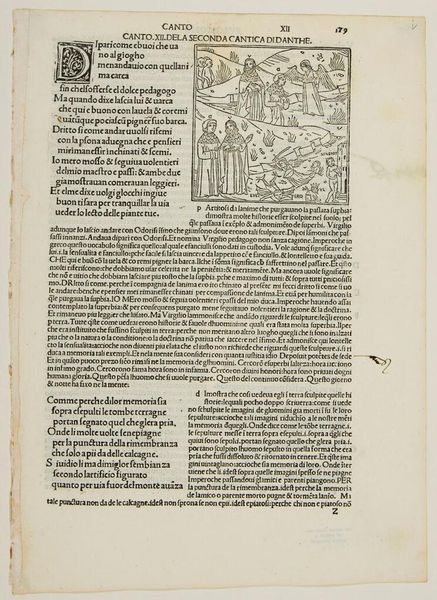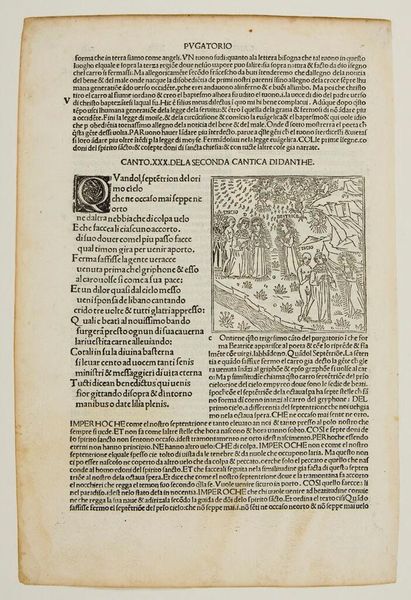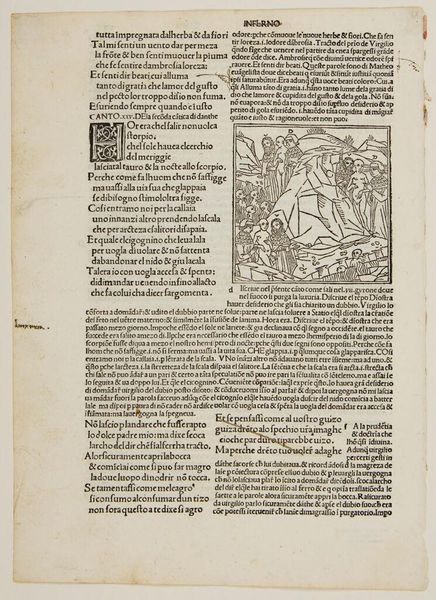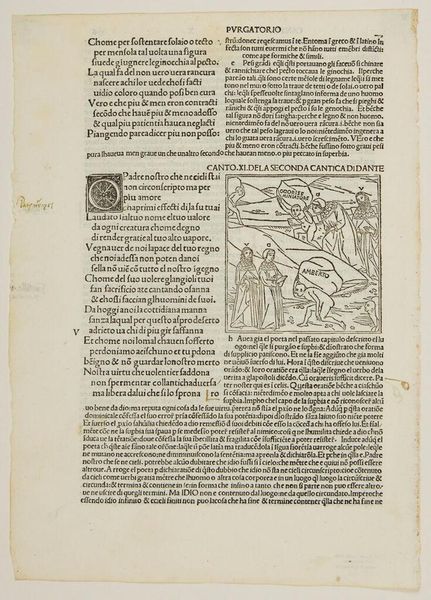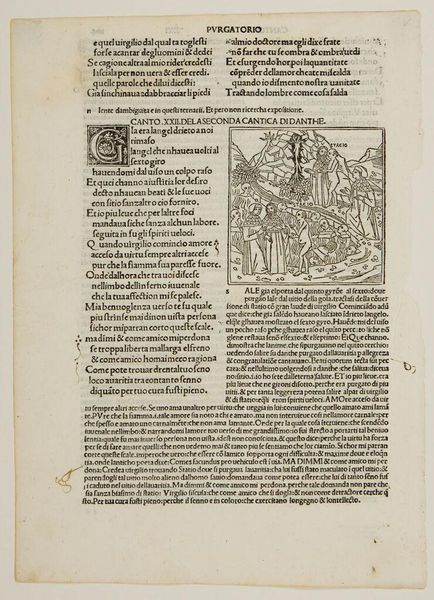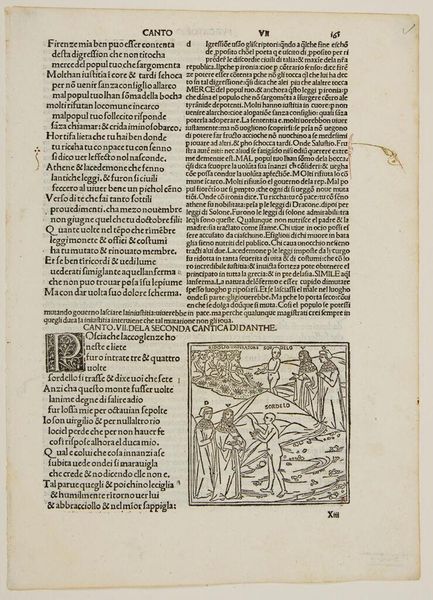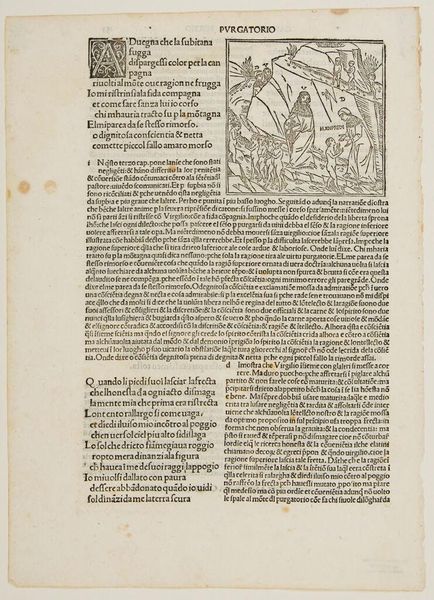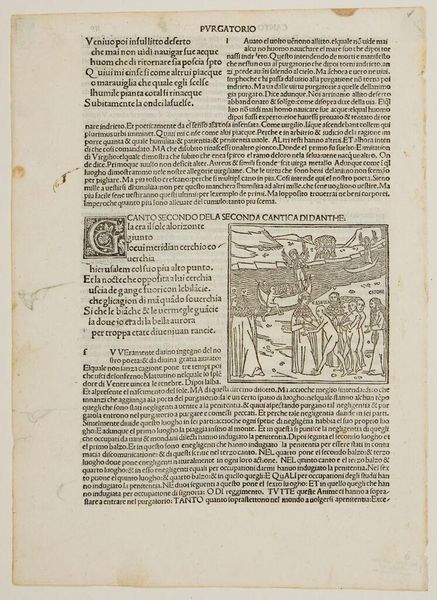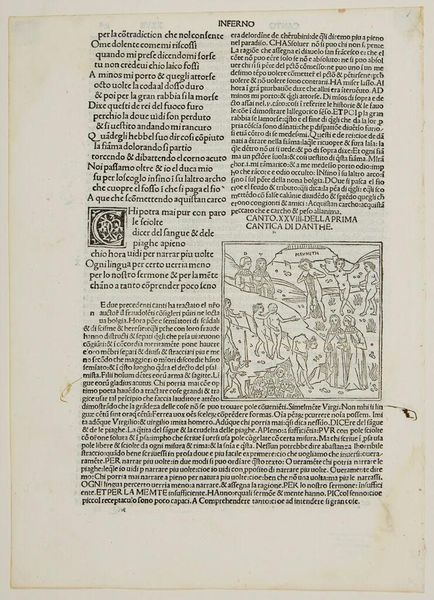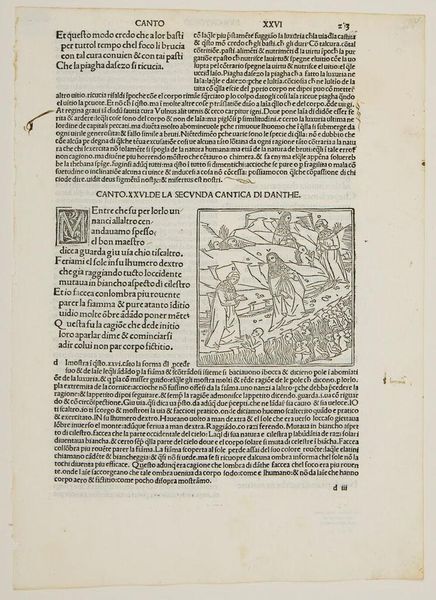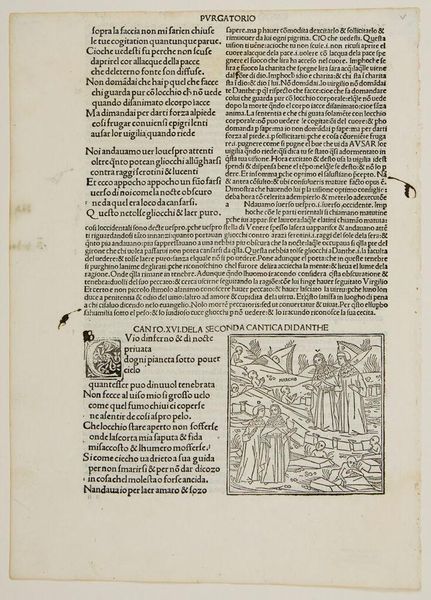
Canto XV. The Second Cornice / The Envious; The Angel of Caritas; Ascent to the Third Cornice c. 15th century
0:00
0:00
Copyright: CC0 1.0
Curator: Let's turn our attention to this intriguing page, "Canto XV. The Second Cornice" from an anonymous edition of Dante's *Divine Comedy*. It presents a woodcut illustration nestled within the text. Editor: My first impression is of a rather stark, almost unsettling dreamscape. The figures seem caught between worlds, both earthly and ethereal, rendered with a sharp, unforgiving line. The cross-hatching gives the whole thing a raw, almost brutal feel. Curator: Indeed, the materiality is key here. Woodcut is an unforgiving medium, demanding precision and leaving little room for correction. That raw quality speaks to the arduous journey through purgatory depicted. Editor: And you can sense the social context seeping through, can’t you? This wasn't made for some pampered elite. Woodcuts were the people's medium, cheaper and more accessible. So, while illustrating high literature, it grounds the divine in the everyday struggle. Curator: Absolutely. This wasn't just about illustrating Dante's vision, but about making it accessible, tangible. The artist, anonymous as they are, becomes a mediator, a craftsman translating spiritual concepts into a material form for a wider audience. It invites us to consider the labor and the consumption of the image. Editor: Exactly! And to think about how the visual and textual interact. The image amplifies the text. A conversation across mediums. It highlights the physical and spiritual labor undertaken in Dante's ascent. It's as if the artist is saying, "Look closely, contemplate the cost." Curator: A powerful reminder that even the most ethereal journeys have material roots. Editor: It certainly gives us something to chew on.
Comments
No comments
Be the first to comment and join the conversation on the ultimate creative platform.
